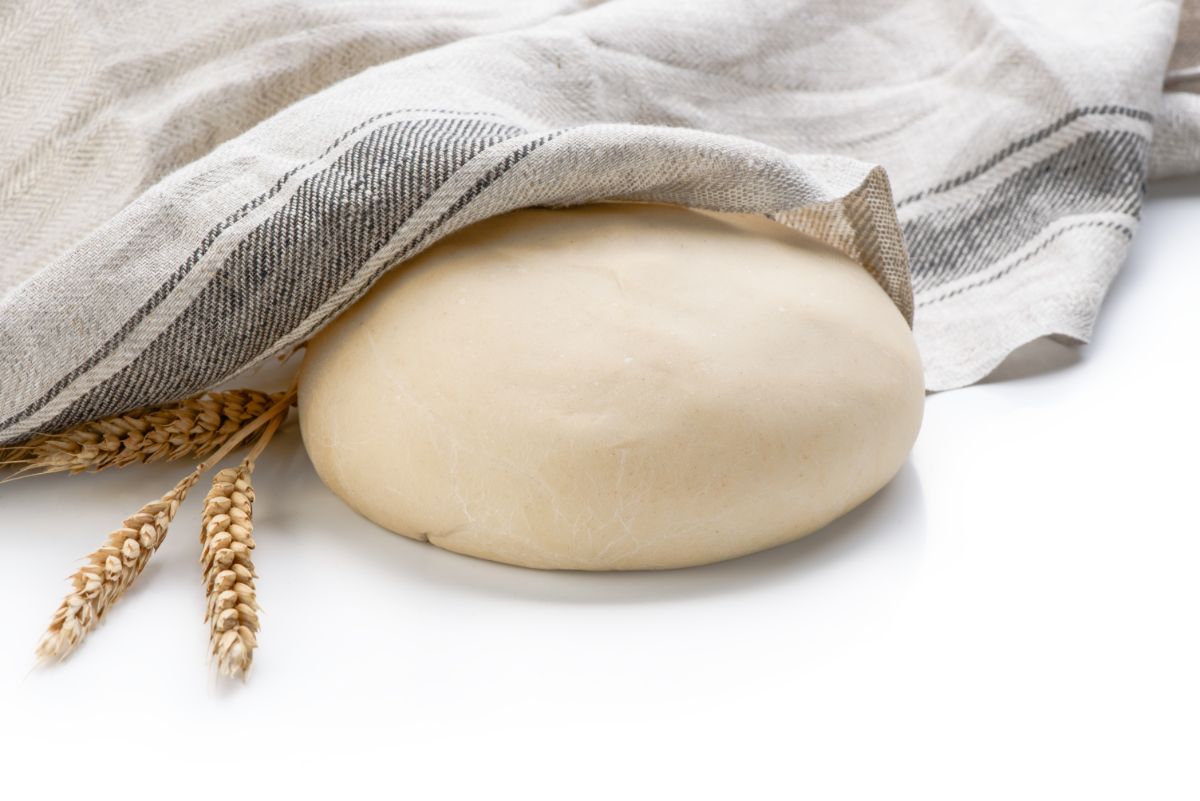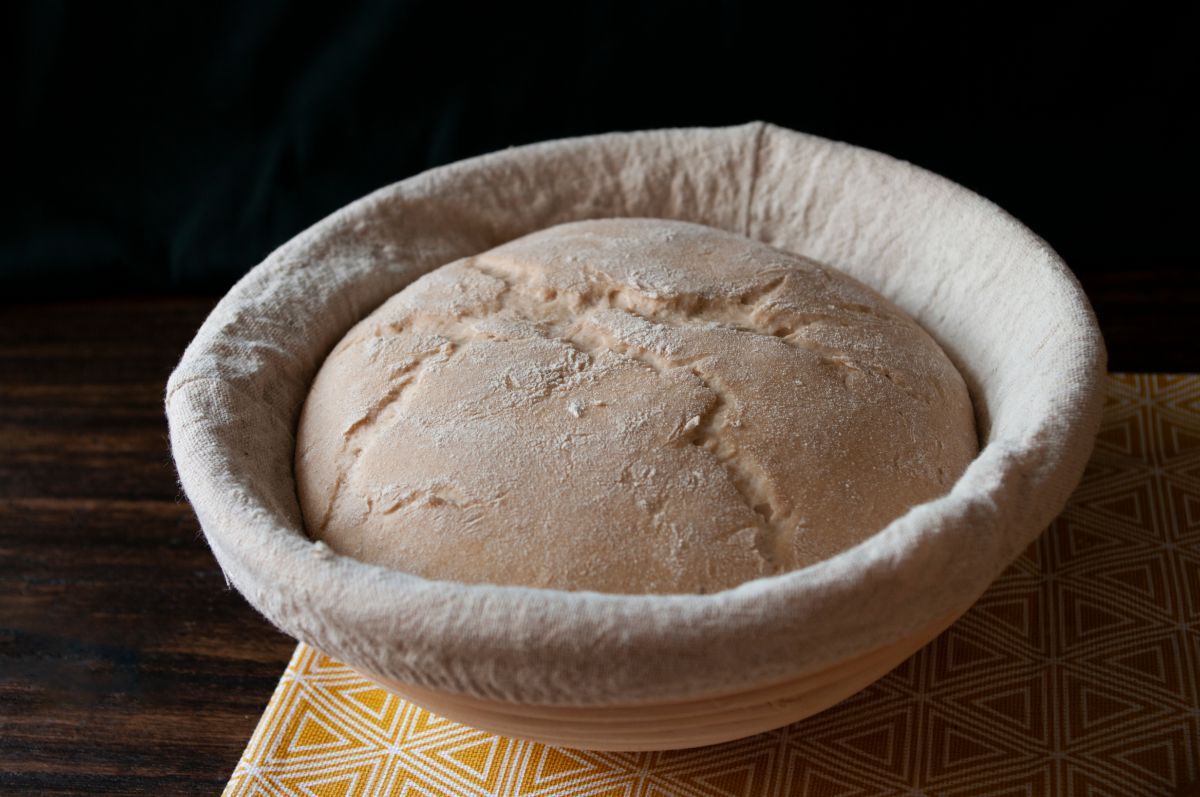You may want to bake your bread as soon as you wake up. If you want to know if overnight storage affects your dough or if it results in a sticky or crumbling bread or even if it results in a retarding dough?

So, how exactly should you store the dough? The best way to rest your dough without compromising its quality and smell is through freezing or refrigerating. Otherwise, without the two kitchen appliances, you can rest the dough on top of your counter for a maximum of 10 hours before baking.
Storing helps a bunch. First, it gives the enzymes adequate time to work on the complex chemicals to realize better and tastier results. Secondly, it offers adequate room for rising and proofing.
*This article may contain affiliate links. As an Amazon Associate, I earn from qualifying purchases. Please take that into account.
- Dutch oven
- Large mixing bowl
- Measuring cups and spoons
- Bread thermometer (fancy or a budget one)
- Scoring lame
Extra (nice to have):
- Kitchen scale
- Dough scraper and bowl scraper (yes, they are different)
- Cooling rack
- Baking stone (you don’t need a dutch oven if you use this)
👉Learn how to make bread and pizza with this awesome book.
You will realize that the bulk of baking itself lies in the two processes. As a result, with storage, you will not waste much of your time waiting for the dough to be ready.
Storing The Dough In Refrigerator
You can chill almost all types of dough, kneaded or not. The low temperatures slow down the process of fermentation but do not stop it. It slowly breaks down the complex chemicals into simpler ones that are ideal for human health.
With this, it will have an overnight rise and a better flavor.
There are three effective ways of storing the dough in a fridge. First, after full preparation, you can place the dough in an airtight container and keep it in the fridge. The container’s size should be twice as big as the dough’s for maximum rising. Otherwise, factors such as high-rising, medium level rising, and flatbreads impact greatly when choosing the size of the container.
Secondly, after the first rise, make the dough into your preferred shape; standard loaf, braided, or round. This should come just before the second rise. Then, grease the baking pan and place your dough on top of it. Then cover the dough and place the pan in the refrigerator for an overnight stay.
When freezing, make sure you use an extra amount of yeast so that the yeast may thaw properly during baking.
Thirdly, you can use a self-sealing plastic bag. All you need is to oil the surface of the bag. The bag should also be large enough to accommodate the rising dough in the refrigerator.
Storing Dough At Room Temperature
To make errors is human, so they say. Sometimes, you may end up forgetting your dough on your countertop for the whole night. Can that affect the quality of your dough?
The answer to that question depends on the components of the dough. It is more of what makes the dough than the environment or period of stay.

You see, a regular dough is made up of water, yeast, flour, and a bit of oil. Normally, in just two hours, a regular dough will double in size and become ready for baking.
But, when you leave it to rise for more than 10 hours, the dough will rise to the maximum and start to deflate. The result is that it will be leavened but with a slightly modified taste and smell. The worst happens when the room is hot during the night.
On the other side, dairy products such as milk, sour cream, and yogurt fasten the rate of fermentation. A dough made of the products tends to get ready faster than expected. With delayed baking, you can end up smelly and yucky.
If you do not have enough time to bake your dough made with the products, it is advisable not to store it at room temperature for an overnight stay. This also applies to egg dough.
Does Refrigeration Affects Retarding Of The Bread
A lot happens during the rising of the yeasted dough. One of the most important processes in the overall bread baking is retarding, commonly known as proofing. This term refers to the final rise of the dough just before baking.
Quality-wise, proofing defines the flavor of the resultant bread. With a good proofing, there is always a lot to smile about
One of the factors that affect proofing is the time taken for fermentation.
Your dough can either be under-proof or over-proof. By resting the dough in the refrigerator, you will be slowing down the rate of fermentation. As a result, it will take longer for the dough to proof.
In any baking process, you can end up with sticky, crumbling, or the desired bread. With over-proofing, there will be a little strength in the bread hence resulting in a collapsing, deflated, or crumbling bread.
With under-proofing, you will have sticky or flattened bread. The only way to tell whether the bread is adequately proofed is through making an indentation with the tip of your finger upon release from the refrigerator.
Overnight refrigeration hardly affects proofing.
Most types of dough can be retarded for 12-18 hours without any devastating effect on the bread. By keeping the dough in the fridge overnight, you will be giving it adequate time to proof to the maximum.
However, keep in mind that overnight is relative to the period between the time you place the dough in the fridge and the time it is withdrawn.
Just after withdrawing the dough from the fridge, it is advisable to warm it to room temperature before baking.
In fact, the time you will take waiting for the oven to preheat is enough.
During this time, the dough will undergo the last rise.
The last thing to keep in mind when baking is the dough’s salt level. Too little amount will lead to quicker proofing. As a result, the bread will not be of excellent taste.
On the other hand, too much salt will not only result in salty bread but also reduce its volume significantly. Go for a 1.8 to 2 percent salt level range when baking.
Conclusion
Domestic baking is always messy, if not well planned. For convenience, it is advisable to start prepping ahead of time.
Refrigeration, freezing and partial baking works better with smaller dough such as breakfast rolls, pizza crusts, and yeast rolls. However, for larger bread dough, full baking and refrigeration are recommendable.
If you want to see exactly how to store your dough overnight then watch the video below that will teach you every step:
